Yields 2 large tinned loaves @ 1064g each

|
Material |
Formula [% of flour] |
Recipe [grams] |
|
1. Leaven |
|
|
|
"Hovis" Super Strong White Flour |
25 |
325 |
|
Water |
15 |
195 |
|
TOTAL |
40 |
520 |
|
2. Final Dough |
|
|
|
Leaven [from above] |
40 |
520 |
|
"Hovis" Super Strong White Flour |
75 |
975 |
|
Salt |
1.75 |
21 |
|
Water |
51 |
612 |
|
TOTAL |
167.75 |
2128 |
|
Overall hydration |
66 |
- |
|
% pre-fermented flour |
25 |
- |
Method:
- The leaven was built with 3 elaborations. Thirty grams of stock white levain, was built as a liquid starter for 2 refreshments [equal flour and water], then a final refreshment to turn it to a stiff starter with a 60% hydration. The build time was just over 24 hours.
- From there, autolyse the flour and water for the final dough for 45 minutes. Note that the "Englishman's castle" was, yet again, snowbound, with the kitchen probe displaying a cruel 9°C. However, the multi burner was just being fired up, so the leaven was warm and active. Still, the dough water temperature used was around 40°C, and the final dough temperature was a mere 23°C
- The flour took up plenty of water, and then mixed very quickly with the salt and leaven added to form a well developed dough. Bulk proof time was just short of 2 hours, during which time, we had a somewhat worrying power cut. I was expecting to retard the dough overnight in the frozen and snowy Square where we live!
- Power restored, I set to scaling and dividing, cutting off 8 pieces at 266g. Mould these round and rest covered for 15 minutes. Then roll up and shape as for mini loaves, and place 4 pieces in each tin, as shown in the photos.
- Prove, fireside for 3½ hours
- Bake profile as follows: Preheat the oven for one hour minimum, to 250°C. Place the 2 loaves side-by-side on the hot bricks, acting as an oven stone. Pour boiling water onto the stones the roasting pot on the base of the oven for steam. Bake for 15 minutes, then turn the loaves round and drop the oven temperature to 220°C for a further 20 minutes. Drop the heat to 200°C, turn the loaves around again, if necessary, and bake out a further 5 - 10 minutes.
- Cool on wires
Notes:
- I made this bread as an experiment, so I could offer useful feedback for my brother, David. He, and his wife, Lorraine, own a lovely Bed and Breakfast spot in the Yorkshire Dales. Dave has been making his own bread every day and offers this to his guests for both breakfasts and evening meals. He uses a breadmaking machine, on the long fermentation cycle. I believe he mixes a portion of wholemeal and "Granary" flour into the grist, along with this particular white flour I have used, and has been very pleased with the results from day one, until October time. Of course, this date is significant, as I estimate the problems he has subsequently encountered and complained about, to coincide exactly with the arrival of the newly harvested crops from 2010! My brother buys his flour online from Tesco, and, uses quite a bit, as a large-scale homebaker, I guess. He has been in touch with the technicians at Rank Hovis, who I actually know and have worked with. They are investigating his complaint, but I gather from his comments that his problem is inconsistency, rather than poor bread, every time! He's a bit lost on this, as am I. So, Alison and I are going to visit Dave and Lorraine on Tuesday, on our way to visit my Mum and Dad, pre-Christmas in East Yorkshire.
- The method used to "tin up" the dough pieces is known in the plant-baking industry in the UK as "four-piecing". I have discussed this with txfarmer in one of her posts, which you can see here: http://www.thefreshloaf.com/node/20669/sourdough-pan-de-mie-how-make-quotshreddablyquot-soft-bread#comment-143675 Basically, with the moulding turned round from the conventional one-piece, the gas cells become elongated in the opposite direction to those in the four-piece, where each piece has been turned through 90° on the single piece. The way the light reflects on the finished crumb gives an added whiteness and superior appearance to the finished crumb. See this explanation from Stan Cauvain: http://books.google.co.uk/books?id=EKGUPlEwP5MC&pg=PA91&lpg=PA91&dq=four+piecing+bread&source=bl&ots=7Ux1YI9K9K&sig=hedWkGHVvbXoK_hMqrkvwvBcynE&hl=en&ei=AJsOTYyOGY6AhQfLv5S3Dg&sa=X&oi=book_result&ct=result&resnum=1&sqi=2&ved=0CBkQ6AEwAA#v=onepage&q=four%20piecing%20bread&f=false It's not that important a feature in the world of Artisan Bread, but it is of fundamental importance to the all-powerful plant bakers in the UK. That and a crumb with no holes, so your bread/toast doesn't drip butter, or, marmalade, onto your lap! These really are the priorities in the long ubiquitous loaf found the length and breadth of Britain. So, I'm trying to mimic this bread, but make it as "real bread" at the same time.
- So, what really matters to us then? Taste and flavour most likely!
Analysis:
- All four of us were really pleased with the bread in terms of its flavour. Granted, the dough had been entirely raised from the power of the natural leaven. However, my deliberate intention had been to make a bread which would have characteristics as close as possible to those of the conventional loaf, BUT, also be pleasing for all of us to eat. Since none of us particularly like "white bread" in this form, there was little point mimicking UK plant bread. So, the natural leaven was strong, but the multi elaborations were designed to create high yeast activity, but less bacterial fermentation, and thus a heavy reduction in any sour notes. Mission well-accomplished here.
- The final bread is not WHITE! Indeed, the ferment is quite clearly not white either. See attached photographs for detail. This is very interesting, as if Hovis were to do any benchmarking of my loaf, made entirely with their white flour, I suspect an immediate action plan may be needed. The end resulting whiteness of crumb in the British "sliced white" is of incredible significance, being one of the key signs of quality a large-scale baker would use to judge their bread. Culturally, this is a huge deal, going back to the invention of roller milling and the industrialisation of agriculture, and the use of world traded wheat. For Britain, this means going back to the latter part of the 19th Century; so white bread for the masses is very long established here, as in France, of course!
- Consideration should be given to the implications of a lack of whiteness. My baking mentor had been a Chief Executive at several of the large plant baking factories before he came into lecturing. His comments about the strong white flour we used during my time at College in Leeds were, of course, very telling. He was always keen to point out the little black flecks in the white flour, when carrying out visual inspections. "They are robbing us", is what he would say. You can imagine given his background, noted above, that he had deep suspicions of the miller! So, when he bought white flour in huge quantities, he really did expect it to be white.
- However, he really wanted his cake, and he wanted to eat it too! Flour which is not so white will have greater water absorbency. This is on account of the extra bran and germ content, which has not been removed so thoroughly as in very white flour. So, the up side of the greyer flour is greater water absorption, thus allowing a plant baker greater yield, the down side is a perception of lesser quality. A plant baker wants a very white flour with exceptionally high quality protein....somewhat like the All-Canadian "Special CC" I have the pleasure of using in College. This is milled by the same miller who mills for Warburtons, a huge and very successful plant baker in the UK. Indeed, currently the most successful of the plant baking triumvirate, and the one recognised by the buying public as producing higher quality bread. Interesting observations, indeed!

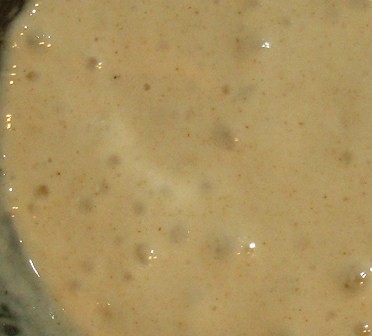
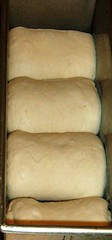
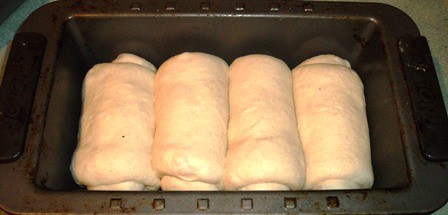
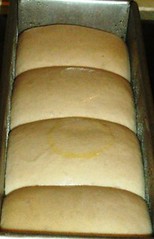
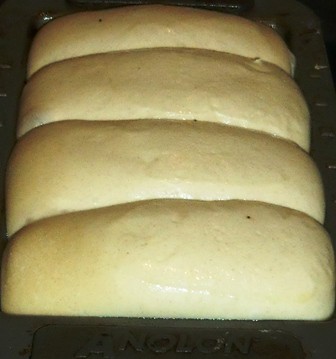
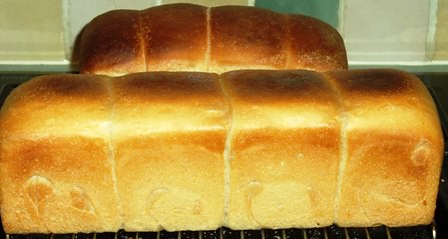
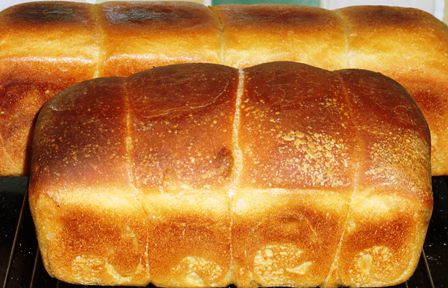

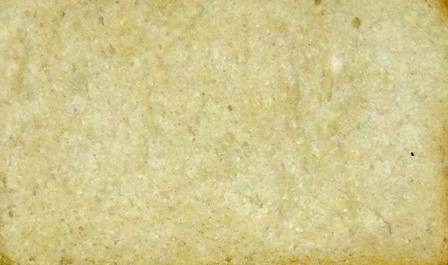
Well, we seemed to be guaranteed a White Christmas here in the frozen North of England. Whatever the weather, and wherever you are, I'd like to wish all you good people at TFL a very Happy Christmas and a really great year in 2011
Andy
- ananda's Blog
- Log in or register to post comments
As you know, I have been making these "white tin loaves" using natural levain for a while now. I think our main difference is that more flour is in yoru levain, which means a shorter bulk rise and proof time for you. From what you wrote, you are trying to minimize sourness, while I am trying to enhance it, so there difference in method makes sense.
As far as the observation of "not white", I see the same thing with my loaves! While my baking friends in China produced much whiter breads using local flour, which MIGHT be bleached. Personally I don't care about how white the bread is, but what an interesting observation!
The next project I am taking on is to tackle "sourdough SOFT ww tin loaves", 100% ww or close to it, slightly enriched. I was able to get satisfactory results using instant yeast, now I'd like to adapt the process to use natural starter. Have you done something similar?
Hi txfarmer,
yes, indeed we agree on "whiteness" not being a key personal priority, thus differing from the intended audience of the commercial baker.
The frequent refreshment cycle was intended to reduce sourness in the bread by speeding up the [natural] yeast activity. Nico [below] uses this trick when he makes those gorgeous yeasted cakes.
As to wholewheat leaven breads, I think you may have to experiment a bit, but expect you will achieve success in the end. Remember the high fibre content is an enzyme rich environment and it will cause the fermentation to speed on; more importantly, this means the rheological affects [changes] in the dough strength and structure will also be significantly affected.
My personal approach would be to start with a white leaven and use that with all wholewheat flour in the final dough. From there, I would gradually introduce and increase the wholewheat flour content in the leaven up to the point where leaven performance became less than acceptable...and I'm thinking about fermentable rates AND enzymatic actions here.
For a true wholemeal tinned bread, which I regularly teach in College, we use a 50 minute autolyse and a 1 hour bulk proof. It produces a great loaf which is completed in the 4 hour practical time we are given on the timetable.
I will enjoy reading about your experiments in the New Year; something I'd be keen to play around with myself too.
All the best
Andy
Enjoy your white Christmas - this time last year our area was digging out after some record snowfalls. Glad you are able to enjoy your craft with relatives.
I must confess, I had never seen or heard of 'four-piecing' before. The closest I'd come was in making pan rolls. But I never thought of applying that to baking in a bread tin. The results look wonderful and I have just added this to my do-do list. I'm eager to see the crumb difference for myself, but your explanation makes sense altogether, and I can understand why commercial bakeries producing sandwich bread need a close, consistent crumb that isn't go to let the filling fall through onto someone's lap.
Really enjoy the explanation and history of these things.
Happy Holidays, and good baking in 2011!
Larry
Hi Larry,
Thanks for your kind words. The plant baker uses a sandwich tin like the Pullman Pan for most of their breads, so 4 piecing is used there. I'm not sure, but for the Farmhouse style I also made, I suspect single piece moulding may be used. Their plant will allow both methods to be employed, of course.
Just a plug for my brother, as he and Lorraine do run a spotless and beatiful Luxury B&B in the fabulous Yorkshire Dales. Anyone travelling around the UK, here is the website detail should you be looking for a very fine place to stay: http://www.theoldtownhall.co.uk/
Best wishes
Andy
My goodness, Andy, your kitchen was as cold as the bottom of my refrigerator!
A most fascinating write-up and method. Something I've never seen here in the States.
I looked at a photo of the Hovis sandwich bread using 100% British wheat and indeed it is as white as the snow there (or at least the snow that's covering the countryside). What methods do the UK bakers use to retain such bright whiteness?
I do hope the snow melts there and things warm up. Have a most wonderful Christmas with your family!
Hi LindyD,
Some of this is really addressed in my reply to Nico. Sorry for not getting back to you at that time, but I was seeking out a photo which may be more illustrative to people reading this post. Here it is:
The first thing to state is that UK flour is not bleached. Chlorine used for cake flours, and bromates and peroxides for bread flour have long been banned in the EU...quite rightly so, in my opinion. But, all white flour in the UK is "fortified", which I think is termed rather cheekily as enriched over in the US. Basically it is a recognition that milling the flour to white deprives us of certain key nutrients and vitamins in our diet. So, the miller is obliged to add them back. One of these is calcium carbonate, which has an understandable whitening effect, as it is chalk. There are others too, although they are pretty tame. The new one on the list is folic acid, which seems to be aimed entirely at pregnant women. Not that I want to see pregnant women suffer due to diet, but I fail to see how adding folic acid is going to derive any benefit to me, and many others besides. Educating and encouraging people to find these essential nutrients from foods which already contain trace elements seems to be utterly beyond our government "experts".
Many thanks for your good wishes. I hope you have a very happy festive season, and wish you all the best for 2011
Andy
The one and only time I've ever seen one of these four piece loaves was when I was taking my training. One of our instructors was British and he was demonstrating for the class various styles of molding for tin and hearth breads. At the supermarket where I work we have a two piece, but the pieces are molded as small boules before panning. The majority of our customers prefer the typical style panned bread, but I think that they would like something like this, particularly families that need to make lots of sandwiches for school and work lunches. Personally I prefer the look of these loaves over the one piece, especially if it's done in a Pullman pan as one of yours appears to be. Great looking loaves Andy! This must be a perfect bread for toasting with a crumb as even and consistent as your loaves have. Much as we all like our hearth breads, there's a lot to appreciate about a well made panned/tinned white loaf. Great post and very informative as usual.
Happy Holidays, and all the best in the coming year!
Franko
Hi Franko,
Thank you as ever for your kind and considered words.
Actually, I made one loaf in a Pullman Pan as a Sandwich loaf, and the other is a "Farmhouse" style of tinned loaf; oft seen with a single cut along the top of the loaf, and a dusting of flour to soften the crust. Yes, the sandwich loaf is a family favourite, and oft used for toast. Hearth breads for me too, but, as noted, there was specific purpose to this topic, and I like making numerous different breads for variety and to keep up with the craft, and continue to push my own boundaries. I know you are also happy to be in the same place.
All good wishes
Andy
and color!
Just like the intended audience I like a totally regular crumb, without holes just like the great one you achieved.
As for the color: I read a 3% fiber content, that is quite higher than the average 1% I see around here in stores. Maybe it's the cause of the pinkish hue?
Great as usual, Andy. I wish you and your family a marvellous festivity.
Hi Nico,
Many thanks for your compliments and kind words.
I think this 3.1g figure for fibre is now around the norm in UK white flour, which has an extraction rate of around 72% of the wholegrain.
The figure you give of 1% really demonstrates how much finer and more refined the Italian tipo "00" and the French type 45 really are. The minimal ash content reflects almost complete removal of bran, germ and nutrients.
The historical and cultural significance of very white flour should not be under-estimated. However, it is interesting that millers are now providing a less white flour and seemingly not being given such a hard time as previously would have been the case. Maybe the wholegrain case is actually making some progress? We can live in hope, I guess!
Very best wishes to you
Andy
I like the look of the "four piece" make-up.
A three piece loaf is somewhat traditional for a Jewish "egg bread" (a little less eggy than challah). I did a six piece loaf for the pan challah test recipe for the NY Baker's book, and I thought it looked spectacular.
Hmmmm ... reminds me I must put my new and as yet unused pullman pan to use. It's time to try a pumpernickel, I think.
David
Thanks David,
Yes I'm sure you'll have a blog post up on Horst Bandel, or, Volkornbrot from the pages of Hamelman before too long. I look forward to reading it.
All the best
Andy
Hi Daisy_A,
So glad you managed to sneak time to look at and reply to this thread.
Interesting what you say about bread machines. I actually really like the bread my brother David regularly produces. He mixes an element of Granary and Wholemeal with the white flour, and he uses a 4 hour cycle on an overnight programme. You cannot knock the fact that people using bread machines have found themselves a genuine alternative to shop-bought. Good for them! I have been less inspired by heavy wholemeal breads made on very short fermentation cycles in bread machines by other friends of mine. Alison and I were riddled with indigestion for the rest of the day and beyond. That brought home to me how important long fermentation really is to produce wholesome and digestible bread [well, for the 2 of us at least!]
Have a great time at the in-laws
Andy